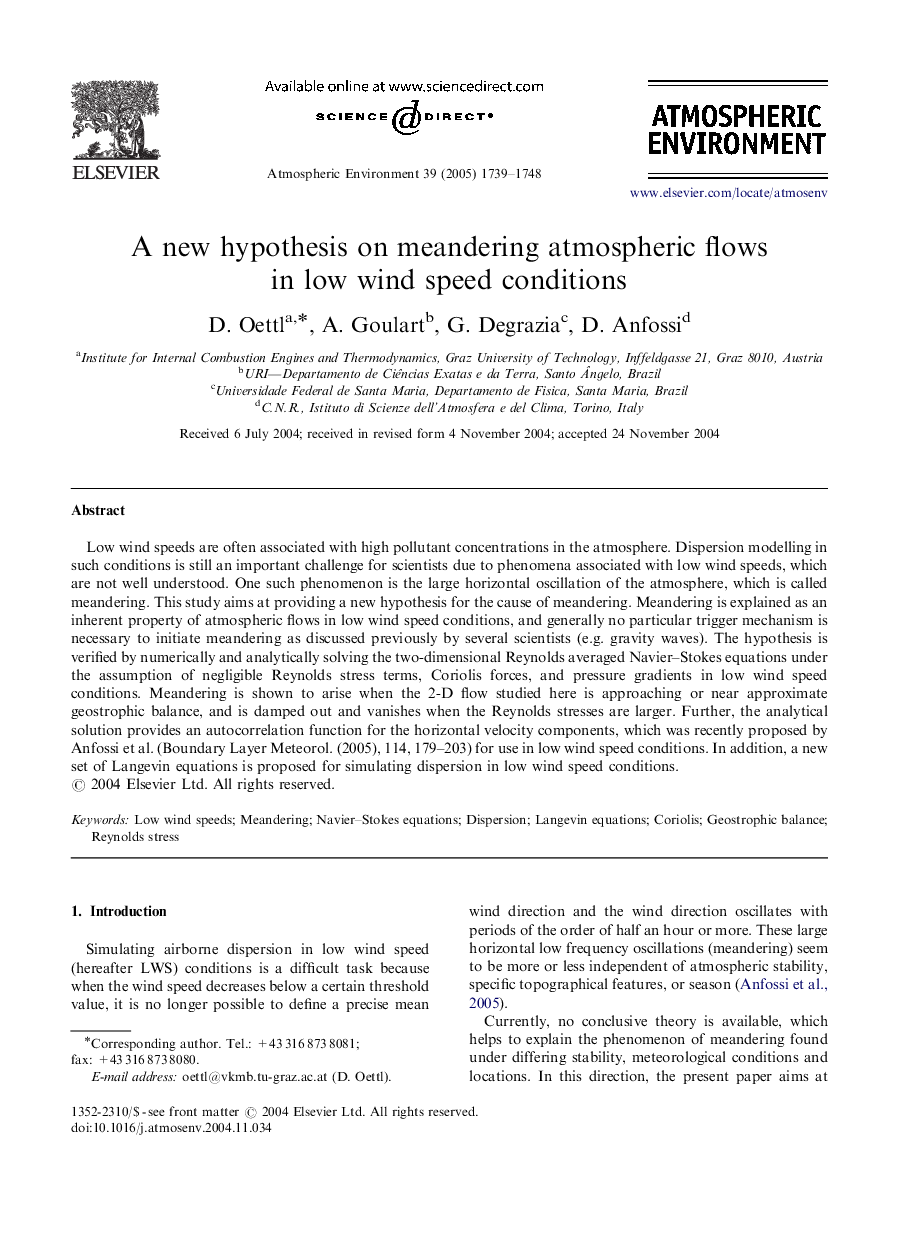| Article ID | Journal | Published Year | Pages | File Type |
|---|---|---|---|---|
| 9458757 | Atmospheric Environment | 2005 | 10 Pages |
Abstract
Low wind speeds are often associated with high pollutant concentrations in the atmosphere. Dispersion modelling in such conditions is still an important challenge for scientists due to phenomena associated with low wind speeds, which are not well understood. One such phenomenon is the large horizontal oscillation of the atmosphere, which is called meandering. This study aims at providing a new hypothesis for the cause of meandering. Meandering is explained as an inherent property of atmospheric flows in low wind speed conditions, and generally no particular trigger mechanism is necessary to initiate meandering as discussed previously by several scientists (e.g. gravity waves). The hypothesis is verified by numerically and analytically solving the two-dimensional Reynolds averaged Navier-Stokes equations under the assumption of negligible Reynolds stress terms, Coriolis forces, and pressure gradients in low wind speed conditions. Meandering is shown to arise when the 2-D flow studied here is approaching or near approximate geostrophic balance, and is damped out and vanishes when the Reynolds stresses are larger. Further, the analytical solution provides an autocorrelation function for the horizontal velocity components, which was recently proposed by Anfossi et al. (Boundary Layer Meteorol. (2005), 114, 179-203) for use in low wind speed conditions. In addition, a new set of Langevin equations is proposed for simulating dispersion in low wind speed conditions.
Keywords
Related Topics
Physical Sciences and Engineering
Earth and Planetary Sciences
Atmospheric Science
Authors
D. Oettl, A. Goulart, G. Degrazia, D. Anfossi,
